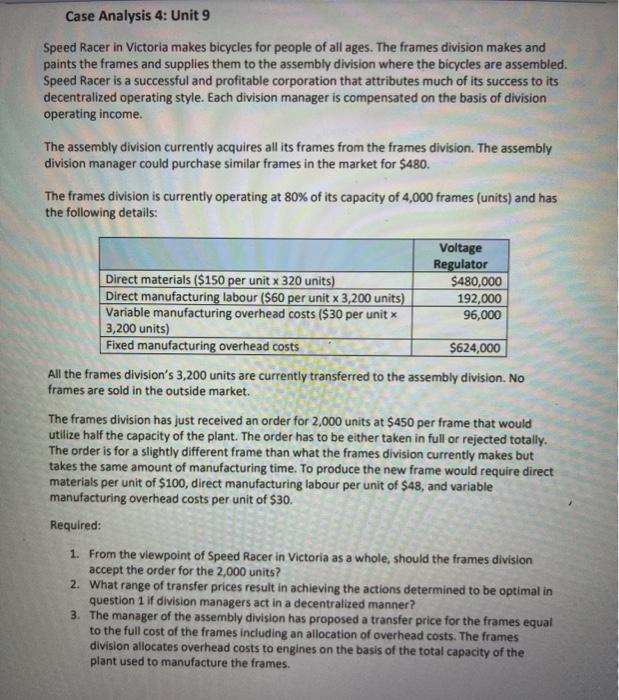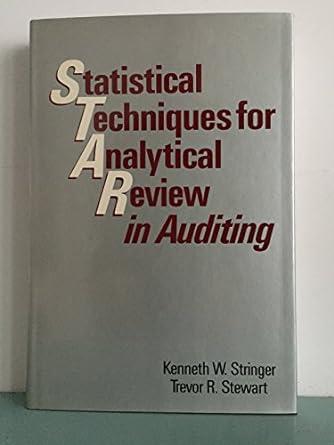Case Analysis 4: Unit 9 Speed Racer in Victoria makes bicycles for people of all ages. The frames division makes and paints the frames and supplies them to the assembly division where the bicycles are assembled. Speed Racer is a successful and profitable corporation that attributes much of its success to its decentralized operating style. Each division manager is compensated on the basis of division operating income The assembly division currently acquires all its frames from the frames division. The assembly division manager could purchase similar frames in the market for $480. The frames division is currently operating at 80% of its capacity of 4,000 frames (units) and has the following details: Voltage Regulator Direct materials ($150 per unit x 320 units) $480,000 Direct manufacturing labour ($60 per unit x 3,200 units) 192,000 Variable manufacturing overhead costs ($30 per unit 96,000 3,200 units) Fixed manufacturing overhead costs $624,000 All the frames division's 3,200 units are currently transferred to the assembly division. No frames are sold in the outside market. The frames division has just received an order for 2,000 units at $450 per frame that would utilize half the capacity of the plant. The order has to be either taken in full or rejected totally. The order is for a slightly different frame than what the frames division currently makes but takes the same amount of manufacturing time. To produce the new frame would require direct materials per unit of $100, direct manufacturing labour per unit of $48, and variable manufacturing overhead costs per unit of $30. Required: 1. From the viewpoint of Speed Racer in Victoria as a whole, should the frames division accept the order for the 2,000 units? 2. What range of transfer prices result in achieving the actions determined to be optimal in question 1 if division managers act in a decentralized manner? 3. The manager of the assembly division has proposed a transfer price for the frames equal to the full cost of the frames including an allocation of overhead costs. The frames division allocates overhead costs to engines on the basis of the total capacity of the plant used to manufacture the frames







